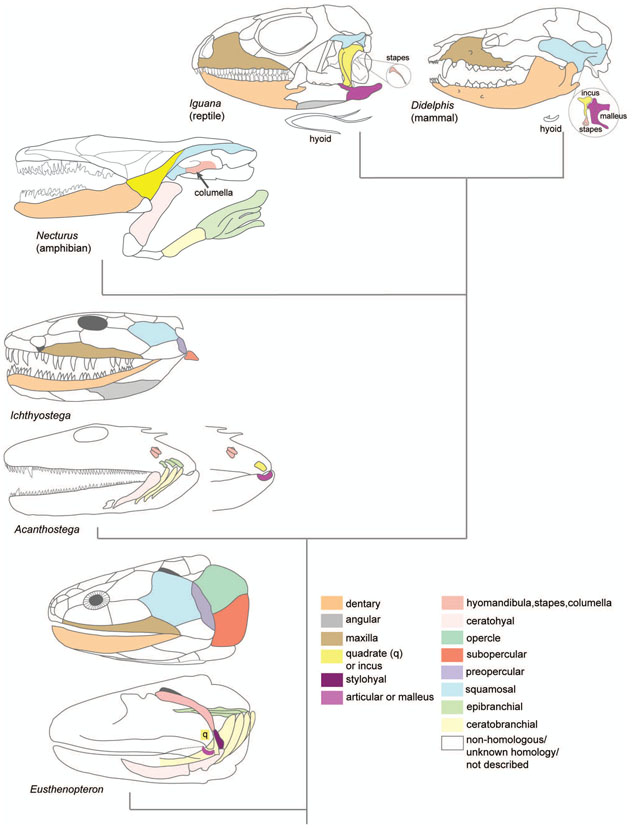Figure 8:
Jaw patterning in rhipidistian fishapods and labyrinthodonts. In Eusthenopteron, a prehistoric sarcopterygian fish, the hyomandibula is a blade-like element adjacent to the spiracle. There is no symplectic. The ceratohyal is in two parts. In Ichthyostega and Acanthostega, the squamosal is a cranial vault bone, and the opercular series is much reduced, where the subopercle and preopercle bones are very small elements. Fossil evidence of the deeper elements of the jaw in Acanthostega reveals a small hyomandibula and evidence of gill structures. In the amphibian Necturus, the ceratohyal is present, as are ceratobranchials and epibranchials, associated with gill structures. A columella (hyomandibula, stapes) is present. In the modern Iguana, the hyomandibula has become a hearing organ, the stapes that connects the quadrate to the inner ear. The second arch-derived hyoid is a separate throat structure. In Eusthenopteron, Acanthostega, and reptiles, the jaw joint is between the articular and quadrate. In mammals such as Didelphis (possum) the lower jaw is exclusively formed from the dentary forming a joint with the squamosal. Besides the hyomandibula-derived stapes, the quadrate has become transformed into the incus bone, and the articular has become the malleus of the middle ear (Valdezate et al., 2015). The styloid process is a projection from the temporal bone and is derived from the second pharyngeal arch (Kent and Carr, 2001) (not shown). Adapted with copyright permission (Clack, 2002; Jarvik, 1980; Kardong, 2012; Porter & Witmer, 2015).

